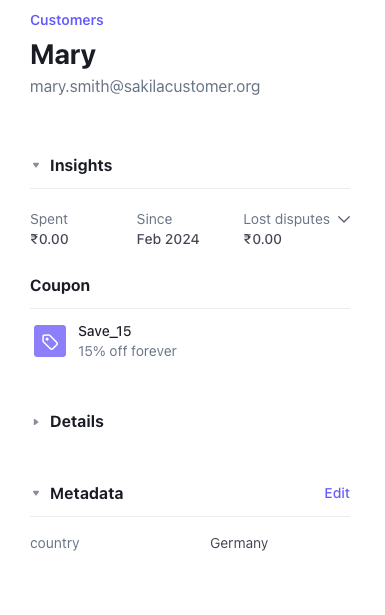Utilize your customer data to tailor discount coupons and optimize the impact in your pricing initiatives.

Imagine if we could determine the exact amount customers are willing to pay for a product. Furthermore, what if we could tailor the price individually for each customer? This is the objective of our use-case: prompting customers to make purchases by customizing prices based on their preferences.
Let's talk about Stripe. Stripe helps with payments, subscriptions, and coupons. But why are coupons important? Well, think of them as a secret weapon for businesses. Warren Buffett, the renowned investor, says they reel in customers and boost sales, leading to long-term success. Plus, coupons can make customers stick around, gently guide them to buy a product, and keep them coming back for more. It's all about keeping customers happy and making bank!
In this scenario, we presume that after conducting data analysis on the warehouse, we've identified that certain customers are open to using either a 30% or a 15% discount coupon. These coupons are generated through the Stripe interface (see image attached). Leveraging this insight, we aim to tailor prices for individual customers accordingly. We'll activate these coupons for customers via the valmi.io reverse-ETL process, which will be executed in three sequential steps.

Initially, we have two distinct discount coupons identified by their unique IDs, and these coupons are randomly allocated to users within the database. The provided sample data illustrates the customer data. Following this, we establish a PostgreSQL database connection on valmi.io. Click here to follow the step-by-step guide.

Next, we integrate a Stripe connection by inputting an API key. You can view the step-by-step guide by clicking on the link here. You can also refer to the documentation for instructions on obtaining this API key.
Lastly, we're ready to sync the warehouse and Stripe and initiate a synchronization between the two platforms. One important thing to note is that with valmi.io, we can map fields using jsonpath for Stripe. We'll also demonstrate how to add a field within the metadata for a Stripe object in this example. This video will show you how the sync works. Below image shows how sync initiates by extracting data from warehouse to delivering it at Stripe destination.

The sync outcome and the Stripe screenshot verify that Mary, the user, has been provided with the 15% discount coupon, and her country is recorded as Germany in the metadata.


This use-case showcases a user-friendly experimentation tool provided by Valmi.io, which can tailor your product prices to promote discount coupons, influencing user decisions in your favor. This approach has the potential to boost sales and increase revenue through personalized pricing strategies. Valmi.io's Open Source reverse-ETL capability can activate data across various other scenarios. You can empower your organization with reverse-ETL by simply deploying it from GitHub. You can view a sync live here. Alternatively, you can schedule a sync on cloud.valmi.io. For further information, please reach out to us by joining our community on Slack. We are continuously adding new features to enhance the platform's functionality.




